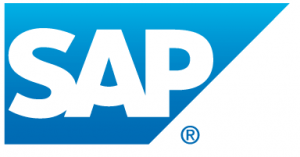This blog post is an excerpt from GovLoop’s recent guide Embracing Data Analytics: Common Challenges & How to Overcome Them. Download the full guide here.
Data analytics adoption is growing across government, and many agencies are starting to see the tangible benefits that it can have on their operations. But the road to achieving those outcomes is a journey that involves repeatable steps to ensure success.
Those steps are divided into four phases: forming, storming, norming and performing, according to John Sullivan, Director of Innovation for the North American Analytics Center of Excellence at SAP, an industry leader in enterprise management solutions for the public sector.
The forming stage begins when agencies get their teams together to share their goals and perspectives about an analytics project. Storming involves fleshing out those ideas to identify a substantive objective. Norming is when the team comes to a more conclusive agreement of the direction they want to move in. Performing is how the team works together to achieve that objective.
“Government is in the storming phase, and agencies are trying to connect the dots between various datasets, what information can be extracted from that data and how that knowledge can be used to drive actions,” Sullivan said. While government hasn’t reached the performance phase quite yet, storming is a good, necessary starting place.
Sullivan’s view of analytics adoption differs from those who view it as a maturity curve. “I really don’t believe in the maturity curve for analytics because it misrepresents the effort,” he said. “That effort is more cyclical, where agencies learn along the way and bring in the additional people, ideas and necessary techniques.”
This cyclical effort, which Sullivan said includes trial and error, works to ensure agencies are able to achieve repeatable success with their analytics programs. More specifically, “there is a collaborative environment, and agencies don’t have to spend years on development and deployment. They can test solutions early on and make changes as they go.”
In a collaborative work environment, the agency customer, subject matter expert and the developer work closely to define their data needs and what intelligence they need to pull from that data. The ability to design, test and verify solutions before putting them into full-scale production is an important aspect of ensuring repeatable success. Agencies must also be able to keep people and resources on target to meet and exceed mission priorities. This is achieved by having “a clear knowledge of what your plan is and why it’s important,” Sullivan said. Success also requires taking advantage of new technology to test assumptions and see if there are more efficient ways to achieve better results.
SAP’s High Performance Analytical Appliance, or HANA, is an example of the technological developments that can provide big payoffs for agencies. The in-memory database stores and retrieves data used by applications. It can also act as a modern-day warehouse, integrating data from a wide variety of sources with real-time data to deliver immediate insights. With HANA, connecting teams and agencies together to achieve a common goal becomes a lot easier.
But embracing analytics is about more than adopting new technology. It also requires a new mindset. Agencies must reimagine what analytics means for the digital enterprise. Efficiency and disruptive innovation are crucial components to reimagining analytics, as are open-mindedness and a cultural change that embraces analytics and agile technology.
Efficiency innovations are focused on looking at data in a new way to solve critical problems, such as recidivism, pollution or other quality of life issues. Sullivan gave the example of the state of Indiana using data analytics to uncover that infant mortality rates could be lowered by implementing something as simple as transportation vouchers for expectant mothers.
Disruptive innovation, or innovation related to meet future challenges, is a bit harder to process. Private sector examples include companies like Uber and Airbnb that have disrupted the hotel and taxi industries. While most people don’t think government agencies when they think about disruptive innovations, agencies have contributed to these movements by releasing valuable data about various topics, including global development, crime, education and health. In some cases, agencies also perform the analysis of the data and provide those insights to the public.






Leave a Reply
You must be logged in to post a comment.